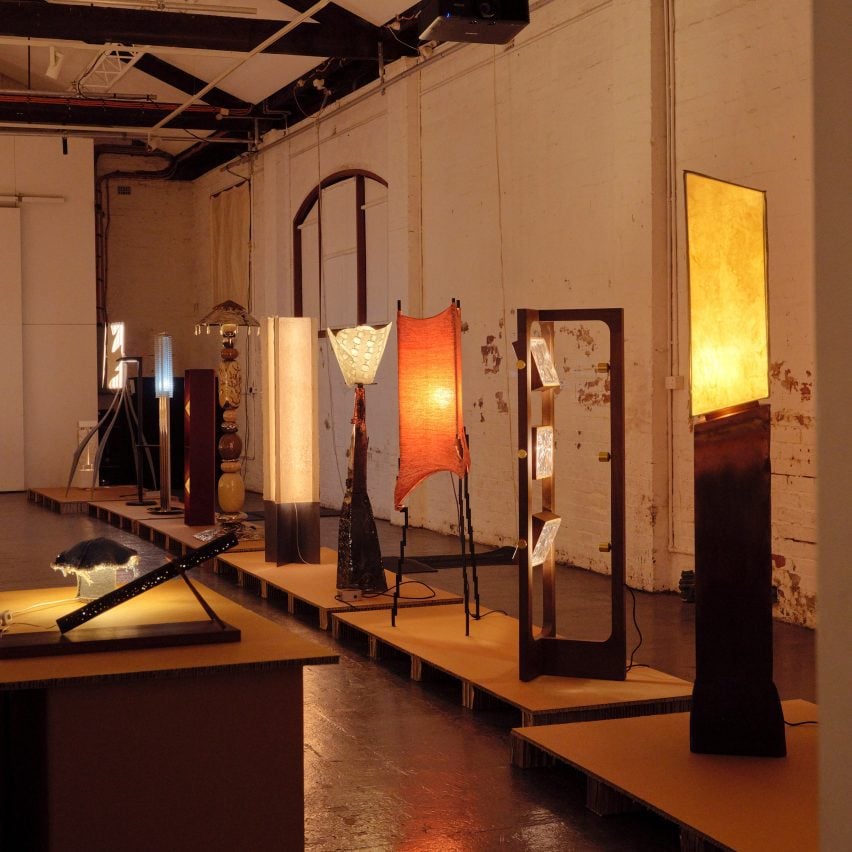Retrospectives of designers Trent Jansen and Volker Haug’s work and 100 lights from emerging and established creatives across Australia were among the key exhibitions at Melbourne Design Week 2025.
As the largest design week in Australia, Melbourne Design Week this year highlighted local design talents that embraced a unique Australian cultural identity and its home-grown manufacturing.
Under the theme of “Design the World You Want”, the ninth iteration of the festival invited both industry professionals and the public to create ideas that would create a better society for the future.
Read on for the seven key exhibitions from this year’s Melbourne Design Week:

Trent Jansen: Two Decades of Design Anthropology
This exhibition celebrated Jansen‘s key works in the past twenty years. Pieces spanned from early stools, transformed from road signs, to collaborations with Indigenous Australian artists and designers in the later years.
As one of Australia’s best-known product designers, Jansen aims to examine the past and reimagine a contemporary Australian identity through his work – a design approach he calls Design Anthropology.
This methodology combines research, storytelling, and co-creation with the goal of producing artefacts that embody cultural values, ideas, and histories.
The exhibition will run until 5 July 2025.

Deep Calm by Sibling Architecture
Melbourne-based studio Sibling Architecture created an exhibition to explore sensory design in architecture. Visitors were invited to lie on custom rugs and place a series of weighted soft forms over their bodies in a warm pink room.
The adjustable arms of the soft forms were designed to be controlled by the users, to recreate the feeling of a heavy hug that would relieve stress and anxiety.
This exhibition was part of an ongoing research project by Sibling Architecture looking at different aspects of sensory design in architecture. The studio believes that architecture often exists in media that primarily engage people’s visual receptors, but that we actually experience architecture and public spaces in much more diverse ways.

20 Years of Volker Haug Studio
Decorative lighting practice Volker Haug, led by the designer of the same name, also celebrated its 20-year anniversary this year and presented a three-day retrospective at its studio.
The exhibition featured a curated selection of works that showcased the studio’s playful and functional design language, including Brother and Sister (above) and OMG Rainbow.
Haug also won this year’s Melbourne Design Week Award, which not only recognised his outstanding lighting design itself but also its contribution to the Australian design industry.
The studio manufactures all of its products in the inner-city suburb of Brunswick East, supporting Australia’s home-grown manufacturing, which has been gaining momentum since the coronavirus pandemic.
The strict lockdown of the country resulted in long shipping delays and high costs for freight and materials, which led many designers to look more inward for sourcing.

Dhawurr Batjbarra (Fishtrap) by Agency Projects
Agency Projects, a not-for-profit that promotes First Nation art, culture and people, created the Dhawurr Batjbarra (Fishtrap) exhibition, showcasing eleven traditionally crafted fish traps and nets used in the waterways on Yolngu Country.
The exhibition stems from a Yolngu-led initiative in 2024 that helped restore freshwater fish populations through the use of traditional fish trapping methods.
Master Yolngu weavers crafted a variety of fish traps and a three-meter-long drag net for the exhibition. These traditional designs, developed over generations, were specifically created to catch different fish species, showcasing the depth of Yolngu expertise in managing aquatic ecosystems.
The exhibition will run until 14 June.

A New Normal by Finding Infinity
Environmental consultancy Finding Infinity invited leading Australian architecture studios to come up with eleven proposals that could transform Melbourne into a zero-carbon city by 2030 in its latest A New Normal exhibition.
These proposals included transforming former quarries into a site for the production of local-species biomaterials, integrating resource-recovery infrastructure into existing sports facilities, and upcycling everyday packaging plastics and Tetra Pak waste into a low-carbon, circular construction material.
Finding Infinity’s principal Ross Harding told Dezeen that the goal of the exhibition was to propose some commercially viable solutions to the public and policy makers in order for the city to be self-sufficient.

100 Lights by Friends & Associates
Lighting exhibition 100 Lights featured work by over 110 Australian creatives, studios, architects and practices, all exploring lighting as a medium.
Curated by collaborative project Friends & Associates, a variety of hand-crafted and industrial lightings illuminated the warehouse-style venue of Meat Market Stables in North Melbourne.
Highlights included Studio Bolaji Teniola‘s Athos Lamp, which was informed by malthouse silos in Naarm, Melbourne, and constructed using layers of waste off-cut American black walnut timber shavings, and designer Jonathan Ben-Tovim‘s futuristic Toyo Lamp that used a car’s headlamp as its light source.
Also on show was Ilanel Design Studio‘s ORA 2.0, an illuminated eclipse that created depth and movement through the interplay of an inner and outer glow.

Aesop x Other Matter
Australian skin-care brand Aesop collaborated with Melbourne-based materials studio Other Matter to create four installations across the brand’s four retail stores in the city, applying the studio’s algae-based bioplastic decals to shop windows instead of PVC.
These decals were made from a unique material developed by Other Matter that can be repurposed and reused following each application, resulting in a self-sustaining closed-loop system.
The plinths in Aesop‘s Collins Street store were wrapped in an algae-based biopolymer that was also used for the scroll hanging from the ceiling, while David Jones Bourke Street store’s window featured a floor-to-ceiling algae-based curtain, which included live geranium plants in response to Aesop’s Geranium Leaf Body Care range.
“Together, these works demonstrate how Other Matter’s algae-based material can be applied across spatial and sensory formats to challenge petrochemical norms in retail environments,” Other Matter’s founder Jessie French told Dezeen.
Melbourne Design Week 2025 took place from 15 May to 25 May 2025. See Dezeen Events Guide for an up-to-date list of architecture and design events taking place around the world.
The post Seven exhibitions that celebrate Australian-made design at Melbourne Design Week appeared first on Dezeen.

